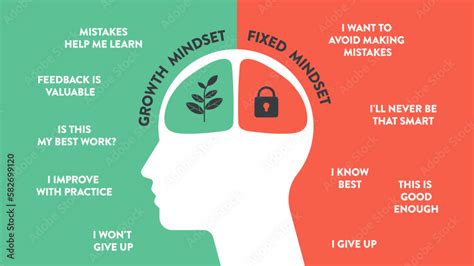For many men, the journey towards ambitious fitness or financial goals often begins with a surge of enthusiasm, only to be met by the formidable wall of inertia. That initial momentum wanes, replaced by procrastination, inconsistency, and ultimately, a sense of stagnation. Overcoming this common hurdle isn’t merely about willpower or discipline; it fundamentally requires a shift in perspective – a recalibration of how one approaches challenges and perceives progress.
The good news is that this inertia is not an unmovable force. By identifying and adopting specific mindset shifts, men can unlock sustained motivation, build resilient habits, and consistently move towards their aspirations.

The Psychological Roots of Inertia: Beyond Mere Procrastination
Often, inertia is mislabeled as laziness. In reality, it’s frequently rooted in deeper psychological factors. The fear of failure, the pressure of perfectionism, the overwhelming scale of a goal, or a lack of clear, actionable steps can all contribute to being stuck. For men, societal expectations around strength, success, and self-reliance can amplify these pressures, making admitting struggle or taking imperfect action even harder.
Mindset Shift #1: From “All or Nothing” to “Small, Consistent Steps”
One of the most insidious traps is the “all or nothing” mentality. This often manifests as: “If I can’t hit the gym for an hour, there’s no point going at all,” or “If I can’t save $1000 this month, why bother saving $50?” This extreme thinking paralyzes action. The crucial shift is to embrace consistency over intensity. Understand that marginal gains compound dramatically over time. A 10-minute walk is better than no walk. Saving $10 is better than saving nothing.
- Actionable Insight: Break down intimidating goals into micro-habits. For fitness, commit to 5 push-ups daily. For finance, set up an automatic transfer of a small, manageable sum each week. Focus on showing up, not on achieving perfection in every session or transaction.

Mindset Shift #2: Focus on the Process, Not Just the Outcome
While outcomes (e.g., losing 20 pounds, saving $50,000) are important for direction, an exclusive focus on them can be demotivating, especially when progress is slow or setbacks occur. The process mindset, however, celebrates the actions taken. It shifts the focus to “Am I doing what I said I would do today?” rather than “Have I reached my ultimate goal yet?”
By falling in love with the process – the daily workout, the weekly budget review, the consistent learning – you build sustainable habits that inevitably lead to desired outcomes. The joy comes from the act of discipline and growth itself, not just the destination.
- Actionable Insight: Define clear process goals. Instead of “Lose 10 pounds,” think “Workout 3 times a week” and “Track all meals.” For finance, “Review spending habits every Sunday” or “Invest X% of each paycheck.” Celebrate adherence to the process.

Mindset Shift #3: Embrace the Growth Mindset Over a Fixed Mindset
A fixed mindset believes abilities and intelligence are static; a growth mindset understands that these can be developed through dedication and hard work. When faced with a fitness plateau or a financial setback, a man with a fixed mindset might conclude, “I’m just not good at this,” and give up. A man with a growth mindset would instead ask, “What can I learn from this? How can I adapt and improve?”
This shift reframes challenges as opportunities for learning and development, transforming setbacks from reasons to quit into stepping stones for future success. It fosters resilience and a continuous desire for improvement.
- Actionable Insight: When you encounter a challenge or a failure, consciously reframe it. Ask: “What was the lesson here?” or “What new strategy can I try?” Seek feedback, read, and learn from others who have navigated similar paths.

Mindset Shift #4: Redefining Motivation from External to Internal
External motivators (e.g., looking good for an event, keeping up with friends, avoiding debt) can kickstart action but often fade. True, sustainable motivation stems from internal sources – a deep desire for personal mastery, health, financial freedom, or leaving a legacy. This shift involves connecting your goals to your core values and understanding the “why” behind your aspirations.
When your actions are driven by internal conviction, they feel less like chores and more like purposeful steps towards a life you genuinely want to build. This intrinsic drive is far more powerful in overcoming inertia.
- Actionable Insight: Spend time reflecting on your core values. How do your fitness and financial goals align with these values? Journal about why these goals truly matter to you, beyond superficial reasons. Regularly remind yourself of this deeper purpose.

Mindset Shift #5: Cultivating Self-Compassion and Patience
The journey towards any significant goal is rarely linear. There will be missed workouts, unexpected expenses, and moments of doubt. A critical mindset shift is to replace harsh self-criticism with self-compassion and patience. Recognize that setbacks are part of the process, not reflections of your inherent worth or capability. Treat yourself with the same encouragement and understanding you would offer a good friend.
Patience is equally vital. Meaningful change takes time. Embracing the marathon, not the sprint, allows you to weather periods of slow progress and avoid burnout.
- Actionable Insight: When you miss a step or fall short, acknowledge it without judgment. Forgive yourself, learn from it, and recommit to the next small, consistent step. Practice mindfulness to observe self-critical thoughts without letting them derail you.
Conclusion
Overcoming inertia in fitness and financial goals is less about a sudden burst of superhuman effort and more about a deliberate, continuous evolution of one’s inner landscape. By shifting from an “all or nothing” to “small steps” approach, focusing on the process, embracing a growth mindset, cultivating internal motivation, and practicing self-compassion, men can dismantle the psychological barriers that lead to stagnation. These mindset shifts don’t just help achieve goals; they build resilience, foster self-awareness, and pave the way for a more purposeful and fulfilling life.




